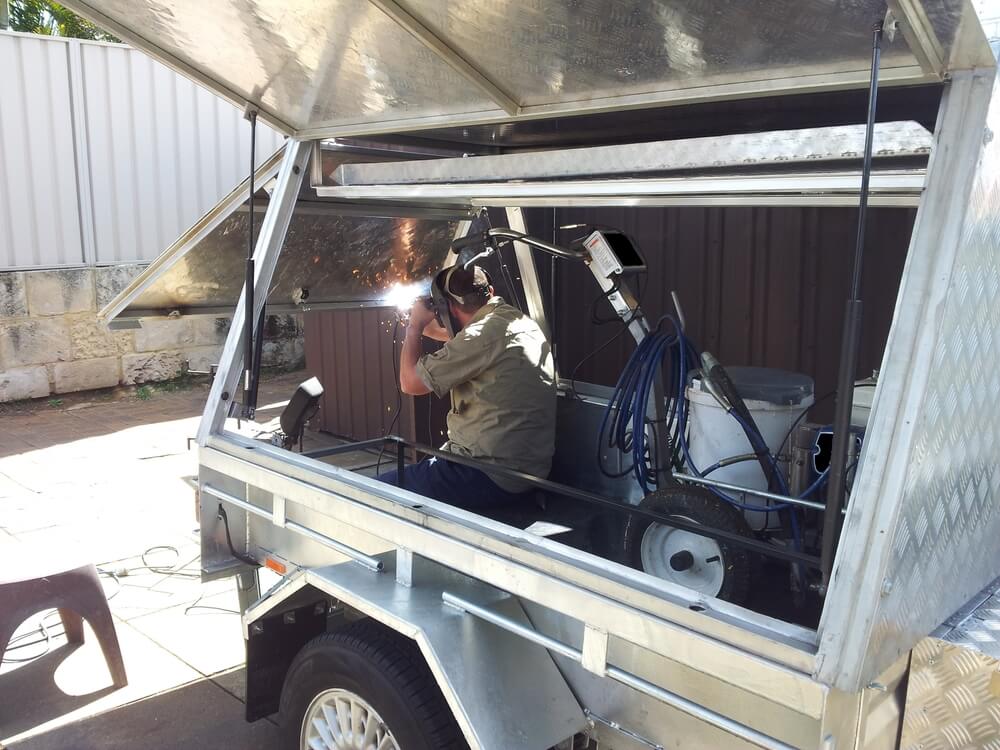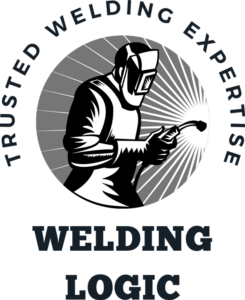A welding trailer gives you a mobile base from which you can perform a variety of welding services. You can keep all of your needed welding gear in the trailer and secure it until needed.
An ideal welding trailer layout is necessary to protect your tools and give you quick access to your welding equipment and supplies. A welding trailer’s mobility also makes it possible to perform welding just about anywhere that has vehicle access.
You need the ideal welding trailer layout to make the best use of it. The following gives you a closer look at what to consider when deciding what the ideal layout might be for your welding.
In This Article
Potential Benefits of a Welding Trailer
If you are a welder by trade, your welding trailer could increase your opportunities to earn income. You also might simply have a lot of welding that needs to be done on a farm that you own or another property.
Maybe you create metal sculptures. No matter the reason, a welding trailer is a great way to get work done in different locations.
Whatever the purpose is, your welding trailer should make it possible to take your welding equipment and supplies to where you need them. A welding trailer is a great option that frees up space in your pickup truck or another vehicle.
The additional space provided by moving your welding equipment into your welding trailer makes it a lot easier to carry pieces of metal, parts, or other items.
An enclosed welding trailer makes it easier for you to keep your welding tools and supplies locked away in your trailer. When you want to go to another location, you save time and labor by not needing to load your welding equipment. Instead, you just hook up and go.
The welding trailer also makes it possible to carry just about anything that you might need for a variety of welding tasks. A well-equipped trailer helps to eliminate the possibility of forgetting to bring equipment or supplies that you might need.
Welding Trailer Layout Examples
There are a number of different examples of trailer layouts you can look at to get inspiration. Here’s a tour of one such trailer:
Another from WT Welding:
And yet another from Appalachian Welding:
Layout Considerations for Your Ideal Welding Trailer
The welding trailer should fully support whatever type of welding you anticipate doing. The type of welding will determine what kind of layout you would need for your welding trailer.
You should consider whether you will use your trailer for:
- Oxy-acetylene welding
- Arc welding
- MIG welding
- TIG welding
You also might use it for another type of welding. No matter what kind of welding you have in mind, your trailer should enable you to quickly and easily access the equipment and materials that you will need to do good work.
The type of welding that you intend to do will help to determine the best layout. Oxy-acetylene tanks are commonly used to cut metal if nothing else. They also help you to heat and prepare metal prior to welding them.
1. Power Source and Quench Tank
You cannot do arc, MIG, or TIG welding without a power source. You should make sure your welder has plenty of power by ensuring you can keep a generator on board.
A generator and a secure fuel storage tank, such as one or two Jerry cans, will help to ensure you have power for your welders no matter where you go. If you can rig a battery or two to store some power, that might help to extend your welding time.
No matter what kind of welding you do, you should have a quench tank handy to cool the metal. You can include one with your welding trailer that might swing out so that you can access it while outside of the trailer.
2. Where to Hold Equipment and Supplies
Your welding trailer will need to carry your equipment and supplies to the location where you will do your welding. When the location changes, your trailer should make it easy for you to use the welding equipment that is needed for whatever task you need to get done.
You also could carry different types of scrap metal in your trailer so that you have some handy that might be needed to repair damaged items.
The welding trailer should have secure storage spaces for tools, tool boxes, and welding supplies. Secure storage enables you to load your trailer once and keep your equipment and supplies safe and secure for when you need them.
3. Security for Welding Equipment and Tools
An enclosed trailer has the added benefit of enabling you to lock your equipment inside of it. No one can see what you have inside the trailer, and your items will stay organized in storage until you use them again.
Your welding trailer needs to safely store your welding equipment and supplies. An oxy-acetylene setup could become very dangerous if it is bouncing around unsecured.
If you are in a vehicular accident while towing your welding trailer, oxy-acetylene tanks might become very dangerous.
Your trailer should enable you to safely secure all of your items so that nothing will fall, spill, or become disorganized. When it is time to get to work, they are in the same place that you put them before.
A sturdy exterior can help to make the trailer much safer for storing tools and equipment. So you should consider the exterior construction as well as the interior configuration when deciding on the ideal welding trailer layout.
4. Easy Access to Safety Equipment
You should have safety equipment located very near the entrance of your welding trailer. That equipment includes a fire extinguisher that could put out any fires that might get started accidentally.
Even the most careful welder could become a firefighter when hot sparks land on something flammable or maybe in some nearby brush if you are outside. Some metal tongs that can hold your hot metal also should be located near the safety gear so that you grab it quickly if you need it suddenly.
A first-aid kit should have a dedicated location on your welding trailer. That location should be near the entrance if you have an enclosed welding trailer. You never should bury the first-aid kit behind supplies so that you always can get to it quickly if someone is injured.
Frequently Asked Questions
Additional Sources & Resources
-https://www.google.com/search?q=academic+sources+for+welding+trailers&oq=academic+sources+for+welding+trailers&aqs=chrome..69i57j0l7.8131j1j7&sourceid=chrome&ie=UTF-8
-https://www.amazon.com/Welding-Trailers-Industrial-Applications-Technology/dp/1482217704
-https://books.google.com/books?id=ykdIDwAAQBAJ&pg=PA257&lpg=PA257&dq= academic+sources+for+welding+trailers&source=bl&ots=QzKgASgcXi&sig=ACfU3U33urXAFMdtB2DY-ImsFfcZ7OMjRA&hl=en&sa=X&ved=2ahUKEwiRlP7V8Y_qAhWxwTgGHcOQBkMQ6AEwEXoECAgQAQ#v=onepage&q= academic%20sources%20for%20welding%20trailers&f=false
-https://www.sciencedirect.com/science/article/pii/S0924013616305158
-https://www.researchgate.net/publication/269993854_Development_of_a_Portable_Welding_Trailer
-https://www.weldguru.com/newsletters/archive/portable-welding-trailers.htm
-http://www.mig-welding.co.uk/arc-welding-trailers.htm
-https://patents.google.com/patent/US20050056061A1/en?oq=welding+trailer&assignee=Miller+Electric+Mfg+Co&hl=en-US&dq=welding+trailer

